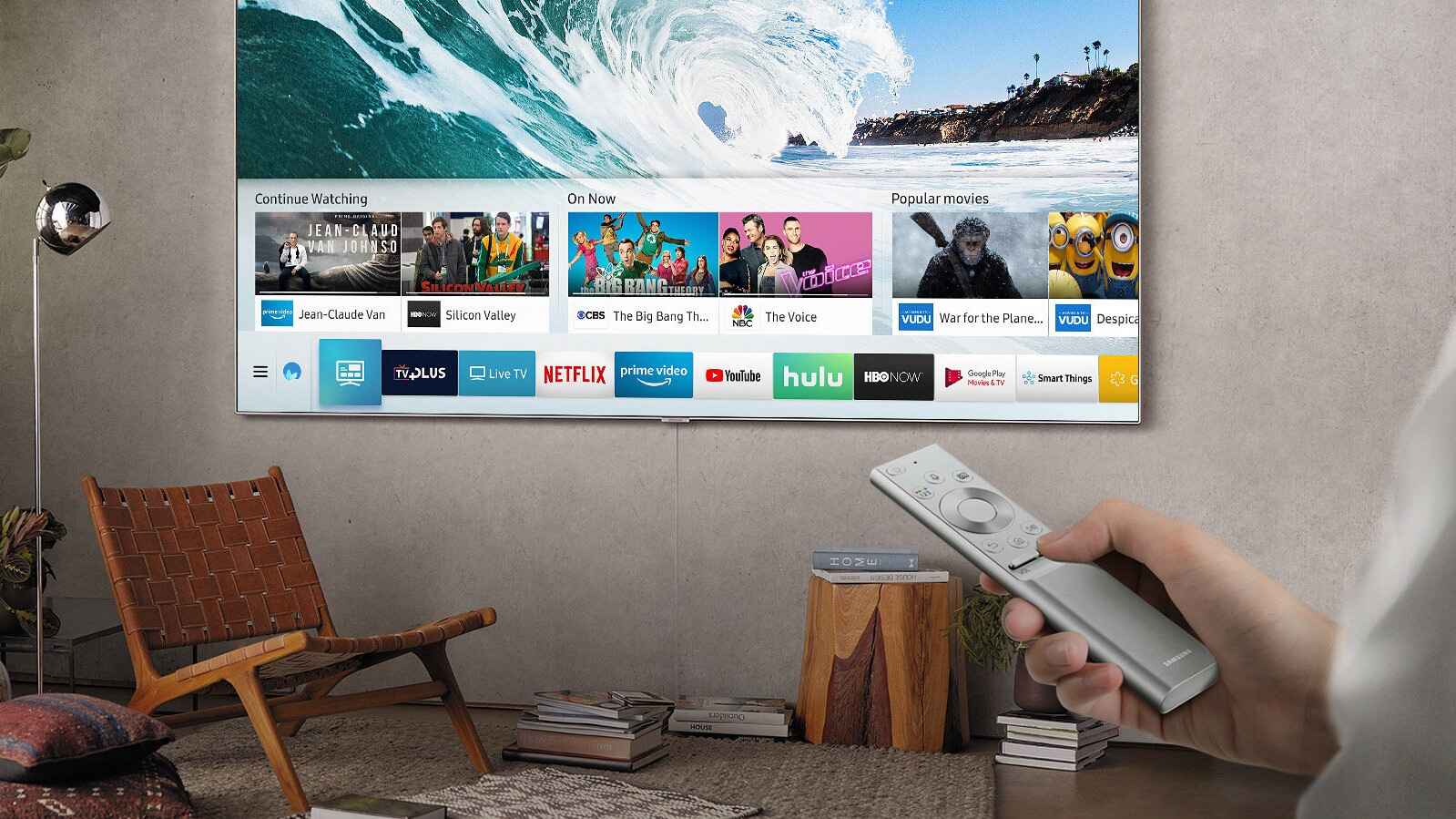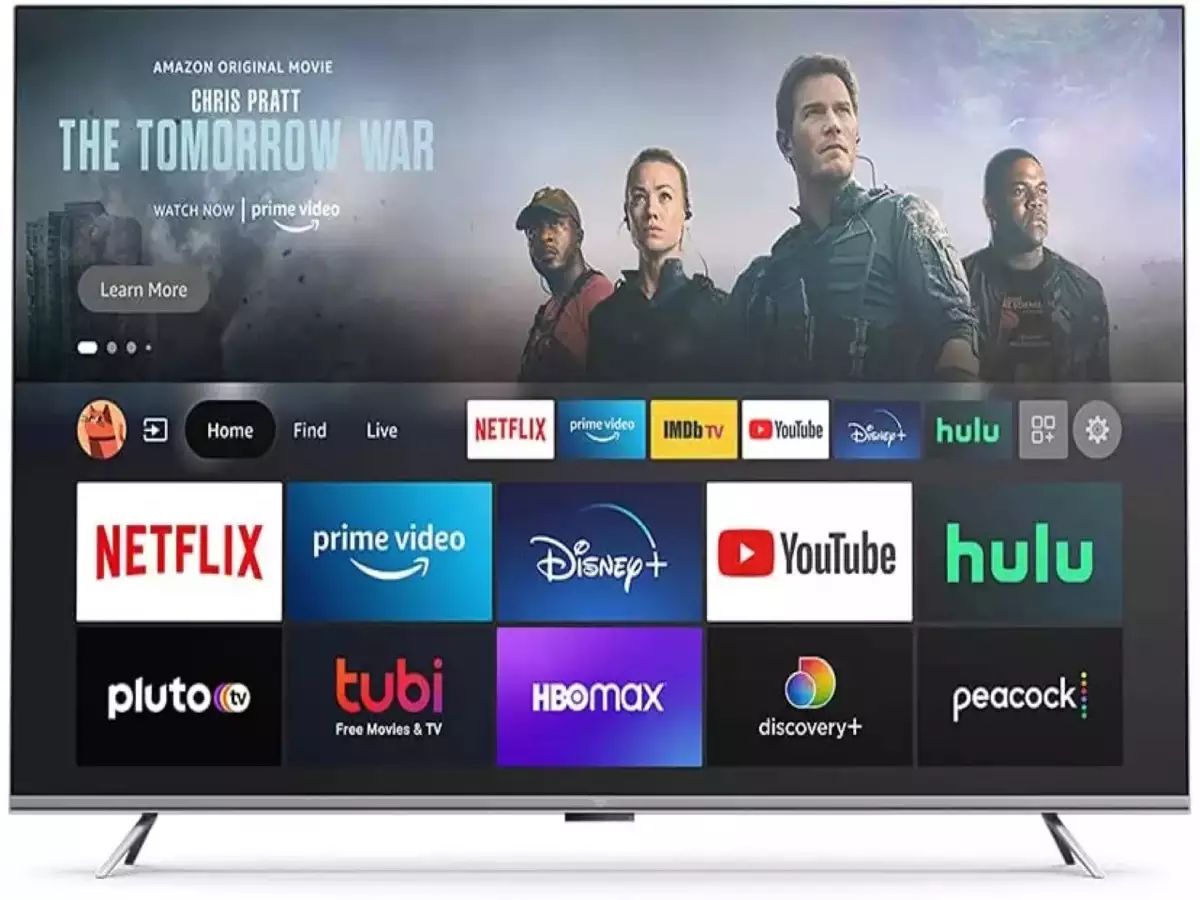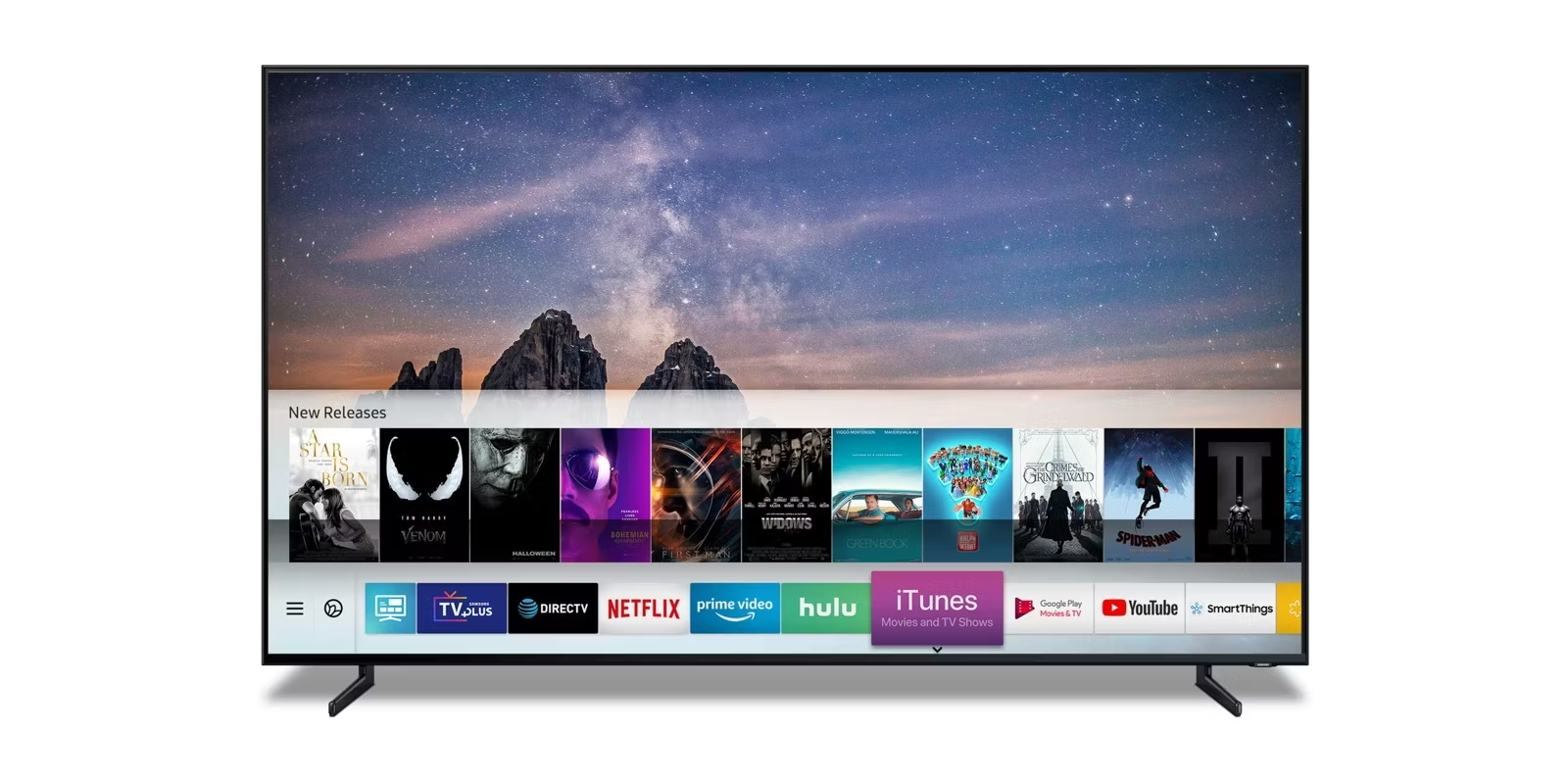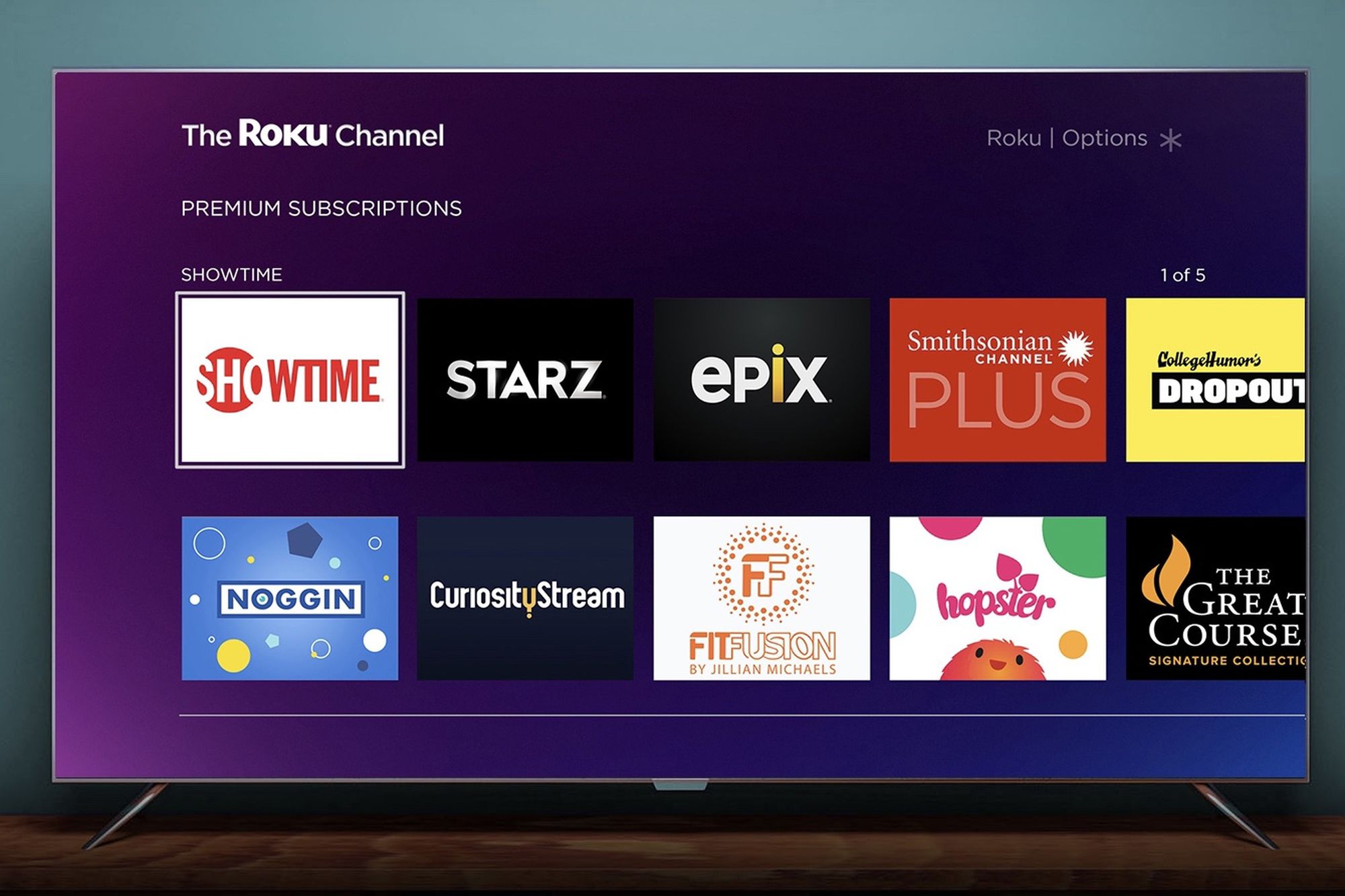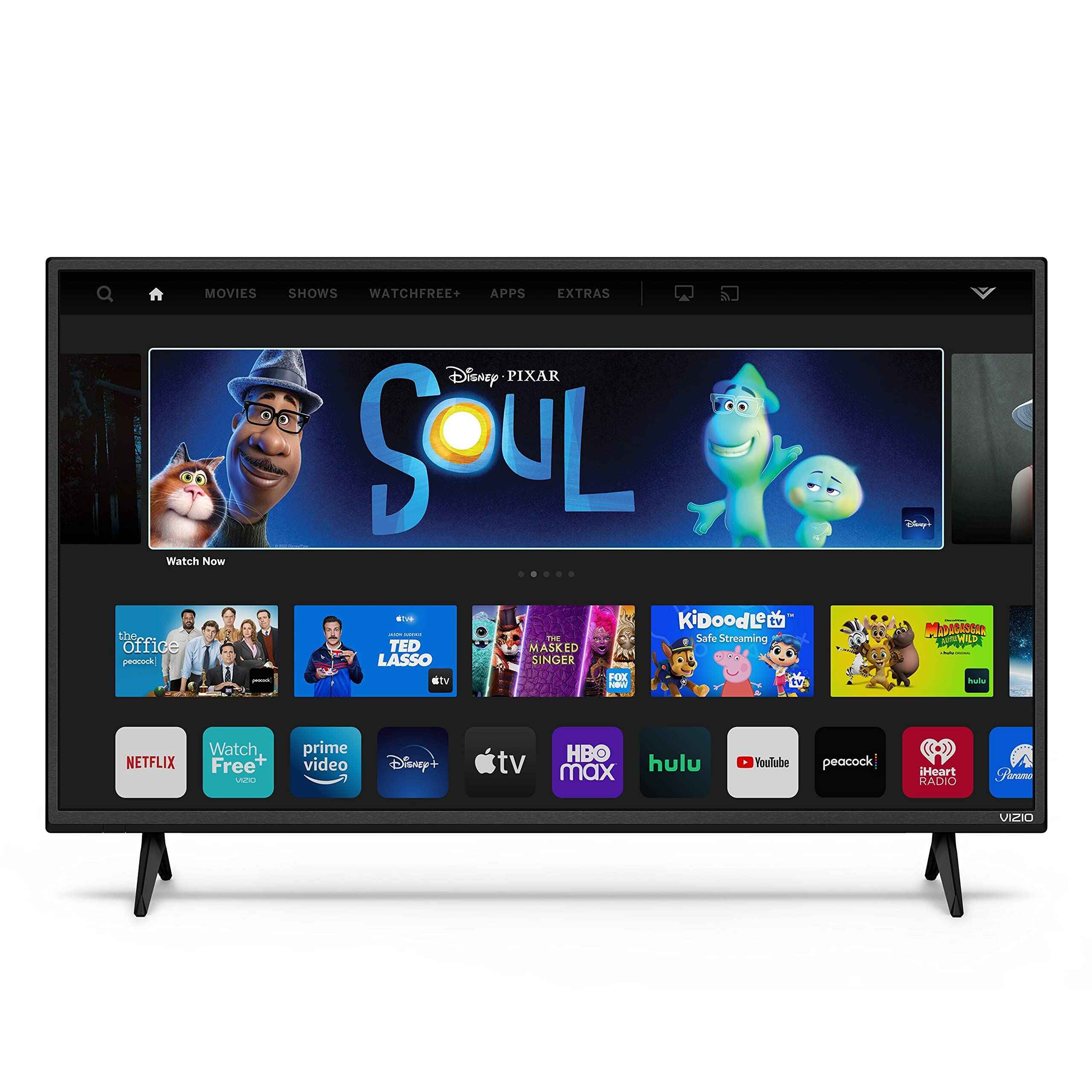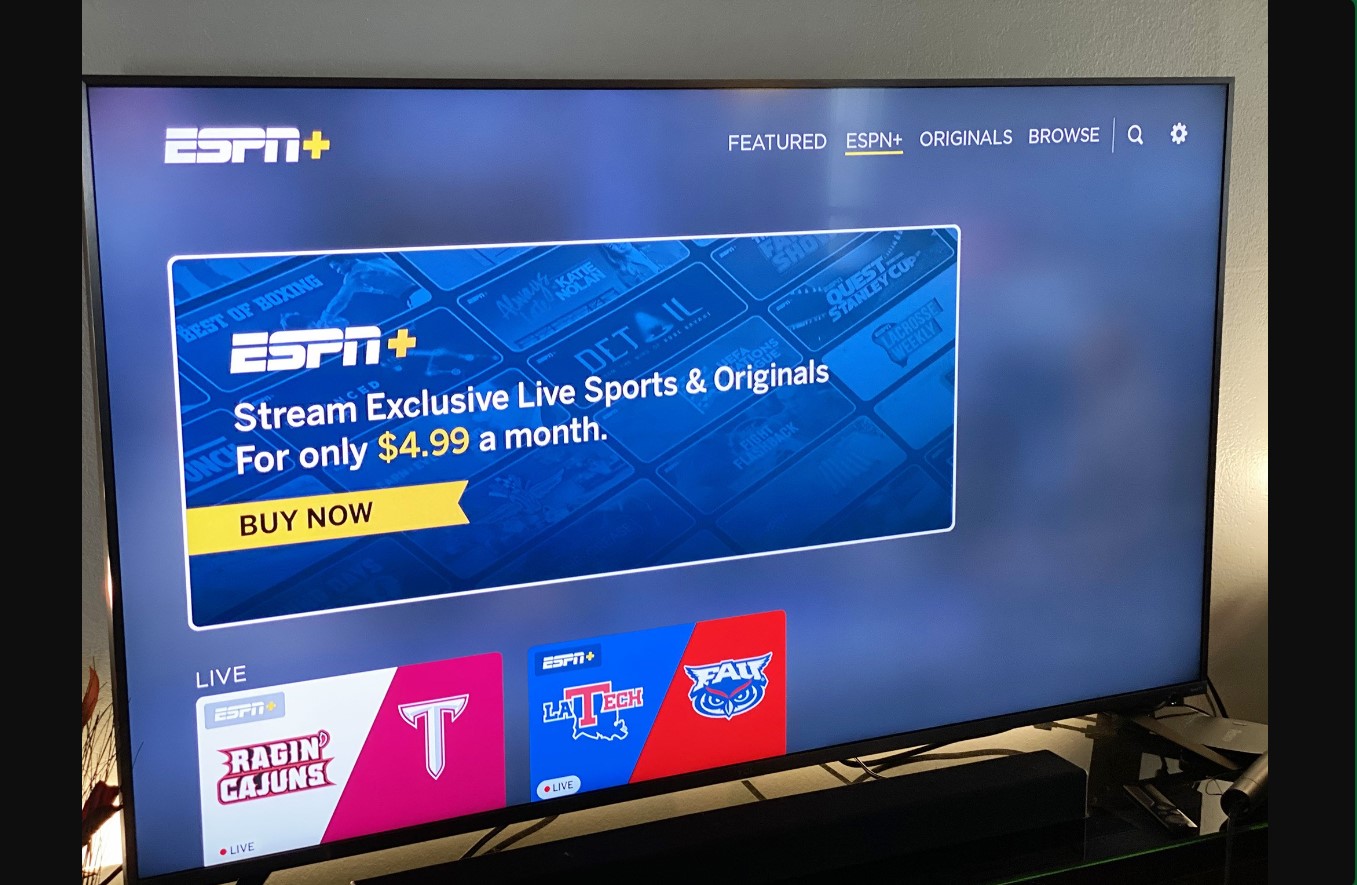Introduction
Welcome to the world of modern entertainment, where the once-simple act of watching television has evolved into a dynamic and interactive experience. With the advent of smart TVs, you now have the ability to access a wide variety of content, including streaming services, on-demand shows, and even live TV channels. But what if you want to watch regular TV on your smart TV? In this article, we’ll explore the different methods you can use to get regular TV on your smart TV, allowing you to enjoy your favorite broadcast channels without the need for a traditional cable or satellite subscription.
Smart TVs have revolutionized the way we consume media by combining the features of a traditional television with the capabilities of a computer. These advanced devices can connect to the internet and offer a plethora of streaming options such as Netflix, Hulu, and Amazon Prime Video, giving you access to a vast library of movies, TV shows, and original content. However, many people still enjoy watching regular television channels for news, sports, and their favorite shows.
Regular TV, also known as broadcast TV, refers to television signals that are transmitted over the airwaves. This type of TV does not require a cable or satellite subscription; instead, it relies on the use of an antenna to receive the signals. In the past, you would connect your TV to an external antenna or cable box to access regular TV channels. But with the rise of smart TVs, there are now alternative methods to enjoy regular TV without the need for additional hardware.
In the following sections, we will explore a variety of methods for accessing regular TV on your smart TV. These methods include connecting external devices, such as set-top boxes or cable boxes, streaming live TV services, and using an antenna. Whether you prefer using your smart TV’s built-in features or connecting external devices, there are options available to ensure you can still enjoy regular TV channels on your smart TV.
Smart TV Overview
A smart TV is a television set that is equipped with internet connectivity and advanced features, allowing users to access a wide range of digital content. These televisions typically have built-in Wi-Fi or Ethernet functionality, enabling them to connect to the internet and access various online services and applications.
Smart TVs offer a user-friendly interface that allows you to navigate through different apps, stream media, browse the web, and even play games directly on your TV screen. Some of the most popular smart TV platforms include Roku TV, LG webOS, Samsung Tizen, and Android TV, each with its own unique features and app stores.
With a smart TV, you can access a vast array of entertainment options. Streaming platforms such as Netflix, Hulu, and Amazon Prime Video allow you to watch on-demand TV shows and movies. You can also enjoy music streaming apps like Spotify and Pandora, or even catch up on the latest news with dedicated apps from major news networks.
In addition to streaming services, smart TVs also support screen mirroring, allowing you to cast content from your smartphone or tablet directly to your TV. This feature is particularly useful for sharing photos, videos, or presentations with friends and family on a larger screen.
Furthermore, many smart TVs support voice control, allowing you to search for shows, adjust volume, and even control other smart home devices using just your voice. This hands-free feature enhances convenience and makes navigating through apps and settings a breeze.
Smart TVs have become the centerpiece of modern home entertainment systems. Their integration of streaming services, internet connectivity, and advanced features provides users with a versatile and immersive viewing experience. With the ability to customize app placement and personalize settings, smart TVs offer a highly personalized entertainment hub.
However, even with all these advanced features, some users still value the simplicity and reliability of regular TV channels. Luckily, smart TVs provide various methods for accessing regular TV broadcasts, ensuring that you don’t have to compromise on your favorite shows or live sports events.
What is Regular TV?
Regular TV, also known as broadcast TV, refers to the traditional method of watching television channels that are transmitted over the airwaves. Unlike streaming services or on-demand platforms, regular TV channels do not require a subscription or internet connection to access.
Regular TV channels are typically broadcasted by local or national television stations and can include a wide range of content such as news, sports, documentaries, sitcoms, dramas, and reality shows. These channels are available to anyone within the broadcast range, making regular TV accessible to a broad audience.
The signal for regular TV channels is transmitted through radio waves, and to receive these channels, you need a television with a built-in tuner or an external TV tuner. In the past, analog signals were used for regular TV broadcasts, but since the transition to digital broadcasting, most channels now use digital signals, resulting in improved picture and sound quality.
Regular TV channels are free to air, meaning you don’t have to subscribe to a cable or satellite service to access them. Instead, you can connect an antenna to your TV to receive these channels. Depending on your location and the quality of your antenna, you can access a variety of local and national channels.
Regular TV offers a wide range of advantages. It provides access to local news, weather updates, and emergency broadcasts, making it an essential source of information. Additionally, regular TV allows viewers to watch live events such as sports games and award shows in real-time, enhancing the communal experience of television.
While regular TV channels might not offer the same convenience or customization options as streaming services, they remain a popular choice for those who value the simplicity and reliability of traditional broadcast television. For this reason, many smart TVs incorporate options for accessing regular TV channels, allowing viewers to enjoy the best of both worlds – the convenience of smart TV features and the familiarity of regular TV channels.
Connecting External Devices
If you want to get regular TV on your smart TV, one of the simplest methods is to connect external devices that provide access to broadcast channels. These devices can enhance your smart TV’s capabilities and allow you to enjoy regular TV without the need for additional equipment or subscriptions.
Using a Set-Top Box or Cable Box: One option is to connect a set-top box or cable box to your smart TV. These devices are typically provided by cable or satellite providers and allow you to access regular TV channels as part of your subscription. Simply connect the set-top box or cable box to your smart TV using an HDMI cable, and you’ll be able to switch between streaming apps and regular TV channels seamlessly.
Streaming Live TV Services: Another option is to use streaming services that offer live TV channels. Platforms like Sling TV, Hulu + Live TV, and YouTube TV provide a selection of regular TV channels that you can stream directly on your smart TV. Simply download the app for your chosen service on your smart TV, sign in, and start enjoying your favorite broadcast channels.
Using an Antenna: If you prefer a more traditional approach, you can connect an antenna to your smart TV to receive regular TV channels over the airwaves. Most smart TVs have a built-in tuner that allows you to scan for available channels. Depending on your location and the quality of your antenna, you can access a range of local and national channels for free.
Using Cable or Satellite Provider Apps: Some cable and satellite providers offer apps for smart TVs that allow you to stream regular TV channels directly on your device. These apps typically require a subscription, but they provide the convenience of accessing regular TV channels without the need for additional equipment or cables. Simply download the app for your provider, log in with your credentials, and start watching your favorite channels.
By connecting external devices or utilizing streaming services and apps, you can enjoy regular TV channels on your smart TV with ease. Whether you prefer the convenience of a set-top box, the flexibility of streaming services, the traditional approach of an antenna, or the integration of cable or satellite provider apps, there are multiple options available to ensure you can access regular TV on your smart TV.
Connecting with Antenna or Cable
If you want to watch regular TV channels on your smart TV, one of the most straightforward methods is to connect an antenna or a cable to your television. This allows you to access broadcast channels without the need for additional subscriptions or devices.
Connecting an Antenna: To connect an antenna, you’ll need to check if your smart TV has a built-in tuner. Most modern smart TVs come with an integrated tuner, which allows you to receive over-the-air (OTA) broadcast signals. Simply connect your antenna’s coaxial cable to the antenna input on your smart TV and follow the on-screen instructions to set up and scan for available channels.
Make sure your antenna is properly positioned for optimal signal reception, as this may affect the number and quality of the channels you can receive. You may need to experiment with different antenna placements or consider using an amplified antenna to boost the signal if you’re in a weak reception area.
Connecting with Cable: If you have a cable provider, you can connect your smart TV directly to the cable outlet in your home to access regular TV channels. First, ensure that your cable is properly connected from the wall outlet to your smart TV’s cable input. Once connected, you’ll need to run a channel scan on your smart TV to detect and store the available channels. The process may vary depending on your specific model, so refer to your smart TV’s user manual for detailed instructions.
Connecting your smart TV to cable allows you to enjoy a wide range of regular TV channels included in your cable subscription package. You can easily switch between streaming services and regular TV channels using your smart TV’s remote control or built-in channel guide.
Keep in mind that if you have multiple smart TVs in your home, you might need a cable box or a digital cable adapter (DCA) from your cable provider for each TV if they don’t have built-in tuners. These devices allow you to tune in to the cable signals and access the full range of channels provided by your cable subscription.
By connecting an antenna or cable to your smart TV, you can enjoy regular TV channels with ease. Whether you prefer the flexibility of an antenna or the convenience of cable, these methods allow you to access broadcast channels directly on your smart TV without the need for additional subscriptions or devices.
Using a Set-Top Box or Cable Box
If you want to access regular TV channels on your smart TV, one common and convenient method is to use a set-top box or a cable box. These devices allow you to connect your cable or satellite service directly to your smart TV, giving you access to a wide range of regular TV channels without the need for additional equipment or subscriptions.
Connecting a Set-Top Box: A set-top box is a device that converts digital signals from your cable or satellite provider into a format that your smart TV can display. To connect a set-top box to your smart TV, you’ll need an HDMI cable. Simply plug one end of the HDMI cable into the HDMI output port of the set-top box and the other end into one of the HDMI input ports on your smart TV.
Once the set-top box is connected, use the input or source button on your smart TV remote to select the HDMI input that corresponds to the set-top box. This will allow you to access and control the regular TV channels provided by your cable or satellite subscription directly on your smart TV.
Using a Cable Box: If you have a cable provider, they may offer a cable box as part of your subscription. Connect the cable box to your smart TV using an HDMI cable as described above. You can then use the remote control that came with your cable box to change channels, access on-demand content, and control other cable box features directly from your smart TV.
Controlling Your Set-Top Box or Cable Box: Many smart TVs are compatible with universal remote controls, allowing you to control both your smart TV and the set-top box or cable box with a single remote. You can usually set this up by following the instructions in your smart TV’s user manual or accessing the settings menu on your smart TV.
Using a set-top box or cable box provides a seamless way to integrate regular TV channels into your smart TV experience. You can easily switch between streaming apps and regular TV channels using your smart TV’s remote control or a universal remote, without the need to switch inputs or change cables.
It’s important to note that the availability of regular TV channels through a set-top box or cable box depends on your cable or satellite subscription package. Different providers offer different packages with varying channel lineups, so be sure to check with your provider to ensure you have access to the channels you want.
By utilizing a set-top box or cable box, you can enjoy a wide range of regular TV channels on your smart TV effortlessly. The integration of these devices allows you to access the best of both worlds – the convenience of a smart TV’s features and the extensive channel options provided by your cable or satellite subscription.
Streaming Live TV Services
If you’re looking to watch regular TV channels on your smart TV without a traditional cable or satellite subscription, streaming live TV services provide a viable solution. These services offer a wide range of regular TV channels that you can access directly on your smart TV through an internet connection.
Sling TV: Sling TV is a popular streaming service that offers live TV channels over the internet. They provide different subscription packages, allowing you to choose from a variety of channel lineups that suit your preferences. Simply download the Sling TV app on your smart TV, sign in with your account credentials, and start streaming live TV channels.
Hulu + Live TV: Hulu + Live TV provides a comprehensive streaming experience by combining on-demand content with live TV channels. With their subscription, you can access a wide range of regular TV channels directly on your smart TV. Download the Hulu app on your smart TV, sign in to your account, and start streaming live TV shows, news, sports, and more.
YouTube TV: YouTube TV gives you access to live TV channels from major networks, including sports channels, news networks, and entertainment channels. By downloading the YouTube TV app on your smart TV, you can enjoy a seamless streaming experience with live TV channels and even record your favorite shows to watch later.
These live TV streaming services provide a convenient way to access regular TV channels on your smart TV without the need for a cable or satellite subscription. They often offer additional features like DVR functionality, which allows you to record and watch shows at your convenience.
To get started with streaming live TV services on your smart TV, you will typically need to download the app for your chosen service from the app store on your smart TV. Once installed, you can sign in with your account credentials or create a new account if you’re a new user.
It’s important to note that live TV streaming services typically require a subscription fee, and the availability of channels may vary depending on your location. Before subscribing to a service, make sure to check the channel lineup and available packages to ensure they offer the regular TV channels you desire.
With the rise of streaming live TV services, you can enjoy regular TV channels on your smart TV with the flexibility and convenience of internet streaming. By exploring the different subscription options and choosing the service that best suits your preferences, you can easily access and watch your favorite broadcast channels on your smart TV.
Using an Antenna
If you want to enjoy regular TV channels on your smart TV without any subscriptions or additional devices, using an antenna is a simple and cost-effective solution. By connecting an antenna to your smart TV, you can receive over-the-air (OTA) broadcast signals and access a variety of free local and national channels.
Compatibility and Built-in Tuner: The first step is to ensure that your smart TV has a built-in tuner, as most modern smart TVs do. The tuner allows your TV to receive and decode the signals from over-the-air channels. Once you have confirmed that your smart TV has a built-in tuner, you can proceed to connect an antenna.
Choosing the Right Antenna: There are various types of antennas available, including indoor and outdoor models. The type of antenna you choose depends on factors such as your location, the distance to the broadcasting towers, and any potential obstructions. Indoor antennas are generally suitable for urban or suburban areas, while outdoor antennas may be required for rural locations or areas with poor reception. Consult the antenna’s specifications and consider factors such as range, frequency compatibility, and signal amplification to select the best antenna for your needs.
Connecting the Antenna: Connect your selected antenna to the antenna input on your smart TV. Most smart TVs have a coaxial input for connecting the antenna. Plug the coaxial cable into the antenna input on your TV and ensure it is securely connected. If your antenna uses a different connector, you may need to use a coaxial adapter.
Scanning for Channels: Once your antenna is connected, you’ll need to scan for available channels on your smart TV. The exact steps vary depending on your smart TV’s make and model, but generally, you can access the channel scan option through the settings or broadcasting menu. Follow the on-screen instructions to initiate the channel scan, and your smart TV will automatically detect and store the available OTA channels.
Optimizing Reception: To optimize reception, adjust the position and orientation of your antenna. Experiment with different angles and heights, pointing it towards the broadcasting towers for better signal reception. Keep in mind that the quality and number of channels you receive may depend on your distance from the broadcasting towers, the strength of the signals in your area, and any obstacles such as buildings or hills.
Using an antenna with your smart TV gives you access to a wide range of free regular TV channels, including local news, sports, and network programming. You can enjoy high-definition broadcasts and a reliable signal without the need for a cable or satellite subscription.
It’s important to note that the number and availability of channels can vary depending on your location. Urban areas often have a more extensive selection of channels compared to rural areas. Additionally, OTA channels may not include some specialty or premium channels available through cable or satellite providers.
By utilizing an antenna with your smart TV, you can combine the convenience of a modern connected television with the simplicity and cost-saving benefits of accessing regular TV channels over the air. Enjoy the freedom to watch your favorite local broadcasts at no cost and without any additional subscriptions.
Using Cable or Satellite Provider Apps
If you have a cable or satellite subscription, many providers offer dedicated apps that allow you to stream regular TV channels directly on your smart TV. By using these apps, you can access a wide range of channels without the need for additional equipment or cables.
Compatibility and App Availability: Before getting started, ensure that your cable or satellite provider offers a compatible app for your smart TV. Most major cable and satellite providers have apps available for popular smart TV platforms like Roku, Samsung Smart TV, LG WebOS, and others. Check your smart TV’s app store or the provider’s website for information on the availability of their app.
Downloading and Installation: Once you have verified the availability of your provider’s app, locate and download it from the app store on your smart TV. Search for your provider’s app by name or look for a dedicated section for TV service providers. Once downloaded, follow the on-screen instructions to set up the app on your smart TV.
Logging in and Account Verification: After installing the app, you will need to sign in using your cable or satellite provider account credentials. These are the same login details used for accessing your account through other devices or online. Enter your username and password as directed by the app to log in, and verify your account by following any additional steps provided.
Browsing and Streaming Channels: Once logged in, you will have access to the TV channels included in your cable or satellite subscription. Use the app’s interface and on-screen menus to browse through the available channels and select the one you want to watch. Most apps provide options for browsing channels by category, favorites, or a program guide.
Remote Control and Additional Features: Some cable or satellite provider apps offer additional features such as DVR functionality, on-demand content, and the ability to control your TV service via the app. These apps may allow you to schedule recordings, access previous episodes, or even control your cable or satellite box directly from your smart TV’s remote control.
Using cable or satellite provider apps on your smart TV provides a convenient way to access regular TV channels without the need for extra hardware. You can navigate channels easily using your smart TV’s remote control and enjoy the familiar experience of cable or satellite TV on a modern and connected device.
It’s important to note that access to provider apps typically requires an active cable or satellite subscription. If you’ve recently subscribed to a provider’s service or made any changes to your subscription, make sure to verify your account settings and ensure you have the necessary channel access within the app.
By taking advantage of cable or satellite provider apps, you can enjoy regular TV channels without the hassle of additional equipment or subscriptions. Stream your favorite shows, news, and live events directly on your smart TV, enhancing your viewing experience without sacrificing convenience or quality.
Conclusion
In conclusion, if you want to watch regular TV channels on your smart TV, there are multiple methods available to suit your preferences and needs. Whether you choose to connect external devices, use streaming services, access channels with an antenna, or utilize cable or satellite provider apps, the options are plentiful and convenient.
Smart TVs have transformed the way we consume media by combining the features of a traditional television with internet connectivity and advanced functionality. With built-in tuners and various smart TV platforms, accessing regular TV channels has become easier than ever.
By connecting external devices such as set-top boxes or cable boxes, you can seamlessly integrate cable or satellite TV services into your smart TV experience. This allows you to switch between popular streaming apps and regular TV channels using a single device and remote control.
Another option is to explore the world of streaming live TV services. Platforms such as Sling TV, Hulu + Live TV, and YouTube TV offer a selection of regular TV channels, providing a convenient and flexible way to access live broadcasts without a traditional cable or satellite subscription.
Alternatively, for those who prefer a more traditional approach, using an antenna is a cost-effective solution. Simply connect an antenna to your smart TV and enjoy free over-the-air broadcast channels, including local news, sports, and network programming.
Lastly, many cable and satellite providers offer dedicated apps that allow you to stream regular TV channels directly on your smart TV. By downloading and installing these apps, you can access channels included in your subscription and enjoy the familiar experience of cable or satellite TV.
No matter which method you choose, it’s important to consider factors such as compatibility, channel availability, and any necessary subscriptions. Additionally, keep in mind that the availability and number of regular TV channels may vary depending on your location and the service provider.
With the wide range of options available, you can easily enjoy regular TV channels on your smart TV, ensuring you don’t miss out on your favorite shows, news updates, or live sports events. Take advantage of the versatility and capabilities of your smart TV to create a personalized and enjoyable viewing experience.







